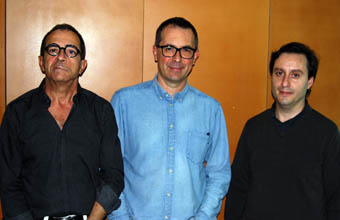
The researcher of the Universitat de València Joaquim Rius Ulldemolins, Francesc Torres and Gil Manuel Hernàndez Martí, from the Department of Sociology and Social Anthropology, concluded that the urbanistic, cultural, touristic, of leisure and image model of the city of Valencia, that during the last two decades revolved around the Ciudad de las Artes y las Ciencias (CAC) and the reorganisation of the coastline, being pulled by the crisis and the lack of resources; exhausted the cultural potential of the city, given the high identification between these elements and the image of Valencia.
In a work published at the “European Planning Studies” journal, the experts compare the urbanistic and cultural model of Barcelona based on the Forum of Cultures of 1994 and the model created on the Ciudad de las Artes y las Ciencias of Valencia during the last two decades, and they do so identifying them as “White Elephants”. These are buildings and places that during their beginning generate big events, delight the local and global public and generate euphoria, wherewith its social and economic cost in the short-term become dissolve in a discourse that mixes the legitimacy of the culture and the supposed future benefit of the act. “In its moment it could seemed a good idea, the generation of cultural spaces for the debate of peace and sustainability (in Barcelona) or the encouragement of the scientific and technical culture (in Valencia), but the objective has been perverted during its realisation until the generation of a stampede of “white elephants” that left a cultural and citizen paramo”, say the researchers.
But these “pachyderms”, as the researchers point out, quickly lose the utility they were conceived for, they don’t justify the negative effects for the most excluded social sectors and “they show to be expensive to manage, impossible to make profitable, difficult to maintain and that can generate in the short to medium term an image of waste and decadence”, according to Torres Pérez, Rius Ulldemolins and Hernández Martí in the document “Desarrollo urbano, política cultural y generación de elefantes blancos. Comparación de los casos de la ciudad de Barcelona y de Valencia”, published in September of this year.
In this way, “The CAC-Puerto Deportivo and the hosted events consumed the energies, public funds and promotion of the cultural policy in Valencia. Its drop, if only because the weight of the generated debt, caused the vanishing of almost all the cultural and sport projects, as well as the deterioration of the marketing od the global Valencia that has in the CSC-Puerto its iconic image”.
On the contrary, “the failure of the 2004 Forum as cultural event was evident and constituted, during two or three years, a decisive element of the cultural policy of the city hall, but not the only one. Barcelona offered and offers other great equipment, an intense cultural life and a trajectory as a creative city. The failure of the Forum didn’t tarnish the previous image of the city”, point out the researchers of the University.
The published article aims to answer the question of why from the 2000 years on in determined cities such as Barcelona and Valencia had been developed this kind of white elephants which are the roots od the fact. In the authors’ explanation they say that the culture has been an increasing debate subject since the 80s, specially within the area of cities that transformed it into a key element of their development model, such as Glasgow, Liverpool, Bilbao or Barcelona, with very different and unequal developments.
In addition, the researchers Joaquim Ulldemolins Rius, Francesc Torres and Gil-Manuel Hernàndez Martí confirm in this white cultural elephants “a shared tendency to the elitisation of the cultural policy management and perverse growing effects where the waste and corruption are an expression of the lack of citizen control of the local cultural policies.
The article, according to the authors, also points out that this model that initially could be conceived as a way of developing an inclusive and conciliatory public policy, has been revelled as an instrument more and more orientated to the external local promotion and progressively more disconnected of the cultural practices of the majority of the population and the tools and channels of participation.
For this reason, the researchers point to the importance of participation of the social and cultural local agents within the design of the urban development strategy, in the studied cities as well as in others with a culture-based development.
Research
In reaching their conclusions, the three researchers of the Department of Sociology and Anthropology of the Universitat de València analysed the cases of Valencia and Barcelona separately, and put in common the cultural and local development strategies of the respective governments. They also turned to the results of two research projects of the Ministry of Science and Innovation, and to documentary sources such as memories, budgets and documents of the Administration. Interviews semi-addressed to a reasoned sample of principal agents of the cultural and urban policy, generated within the research area.
Joaquim Rius-Ulldemolins, Gil-Manuel Hernàndez i Martí & Francisco Torres (2015): “Urban Development and Cultural Policy ‘White Elephants’: Barcelona and Valencia, European Planning Studies”
DOI: 10.1080/09654313.2015.1075965
Last update: 23 de november de 2015 07:00.
News release



















